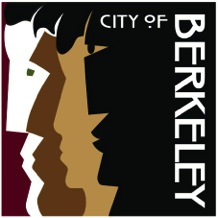As part of the Global Urban Humanities Initiative Colloquium called Reading Cities, Sensing Cities, we have asked students and visitors to write responses to each of the weekly guest lectures. On September 11, 2014, Lauren Kroiz spoke about Berkeley—The City and Its People, a mural by Romare Bearden that once hung in Berkeley City Hall, was exhibited at the Museum of Modern Art, and is now indefinitely in storage. She asked viewers to consider the intentions of the city leaders of 1973 in inviting a well-known African-American artist from the East Coast to portray their city. Kroiz is Assistant Professor of Art History at UC Berkeley.
Her presentation is available here.
Video of her presentation is available here.
By Elisa Russian
In 1972 the renowned Harlem-based African-American painter and activist Romare Bearden came to Berkeley for ten days to visit the city and get an insight into the life of the community. The City Council commissioned him to paint a work in which Berkeley’s multicultural richness would emerge clearly, and he wanted to capture Berkeley’s spirit, engaging himself directly in the many different realities of the city. These realities ranged from UC Berkeley’s environment to the festivals along Telegraph Avenue and local Buddhist services. As a result, Bearden realized the eight-panel mural entitled “Berkeley – The City and Its People” (1973), a vibrant, dynamic and deeply personal narrative of what Berkeley looked like in the Seventies. It has since then become the symbol of the city and the four profiles on the bottom center have come to serve as the city logo because they express Berkeley’s multi-ethnic complexity.

The mural, one of the few works in which Bearden dealt with an unfamiliar environment, shows his understanding of Berkeley as he experienced it. Bearden read the city, sensed it and then portrayed it back in his studio in New York, drawing on both his personal recollections and the visual materials he brought with him. The mural can be seen as a singular guidebook to Berkeley because one can easily identify the city’s major attractions (Berkeley Marina, Sather Gate, the Campanile, etc.), but at the same time it conveys the image of an idealized community and the hope for a better future. The unique relationship between particularity and abstraction, private lives, actual details, symbolic meanings, dream and utopia, as Professor Lauren Kroiz pointed out, is what makes this work so fascinating. Starting from the mid-Sixties, Bearden considered the potentiality of collage and photomontage. Here, drawings and photos of Berkeley’s inhabitants are juxtaposed with simplified and colorful forms in a syncopated jazz rhythm. Time is compressed in the flat, smooth dimension of the collage: past, present and future are united on one screen to create a new and potentially unexpected collective story, a narrative more aware of the value of each and everyone’s cultural roots and their significance for the community to come.
Elisa Russian is a first year Ph.D. student in the Italian Studies department.



